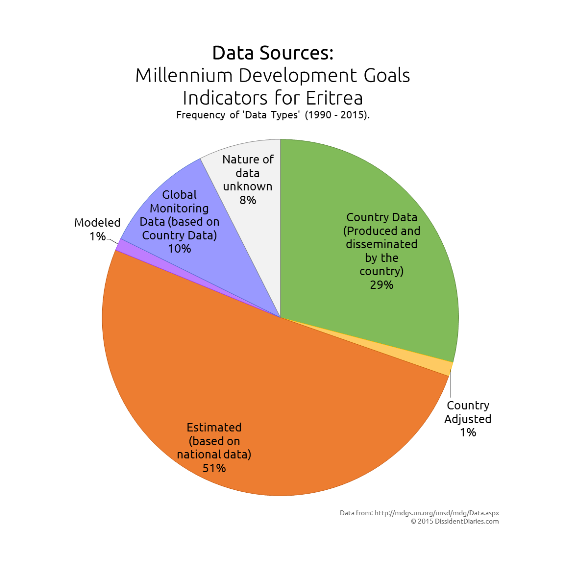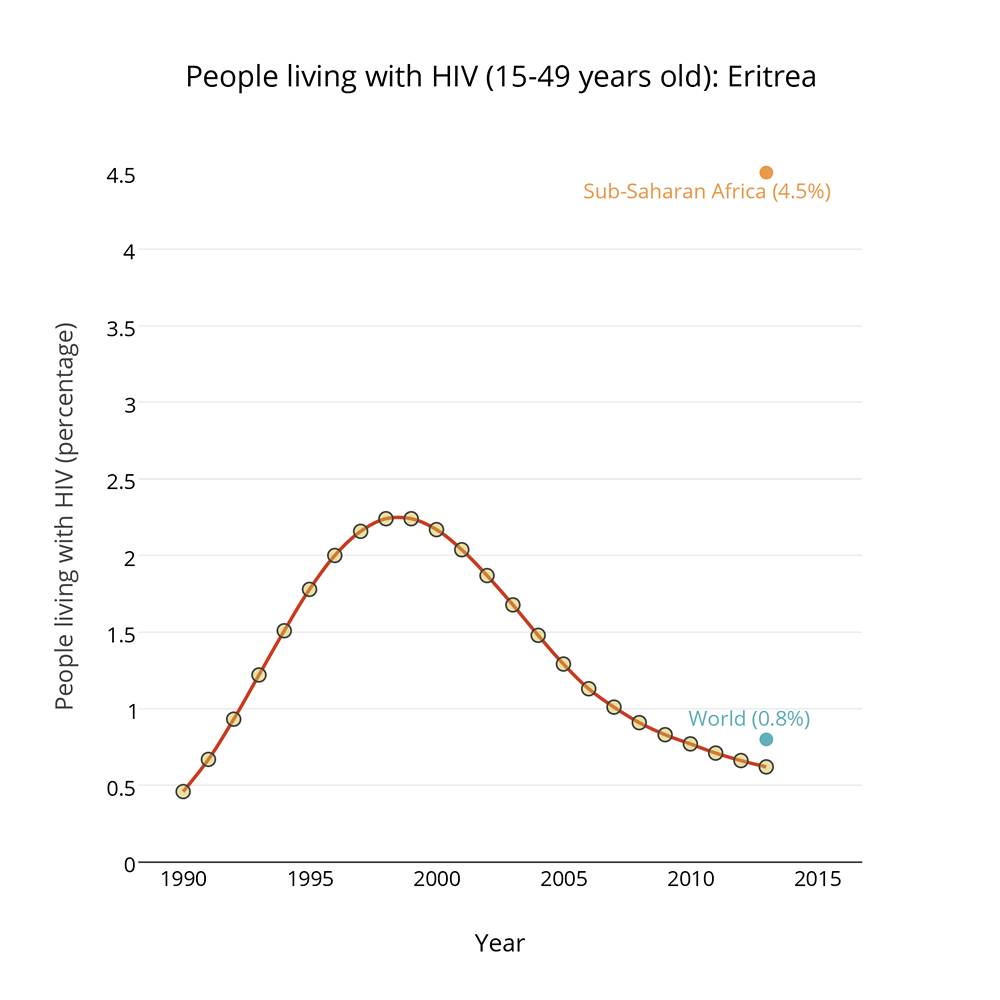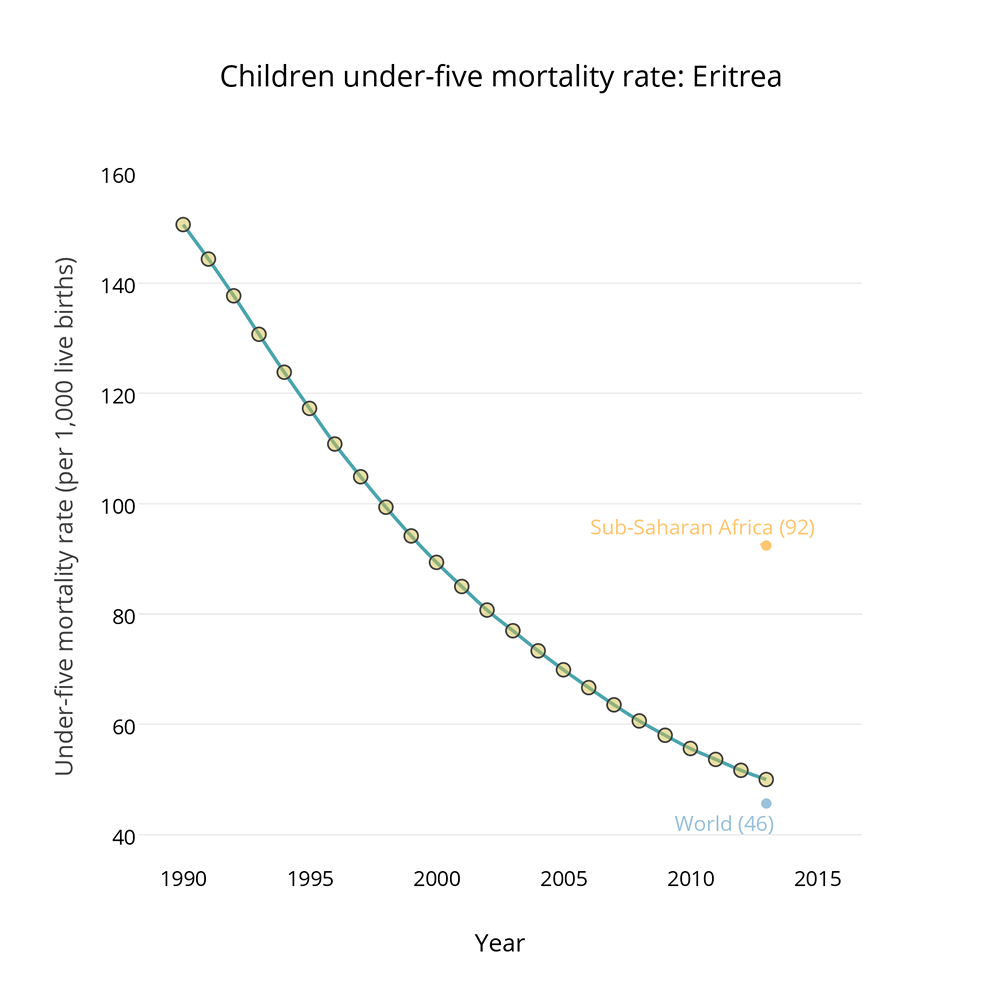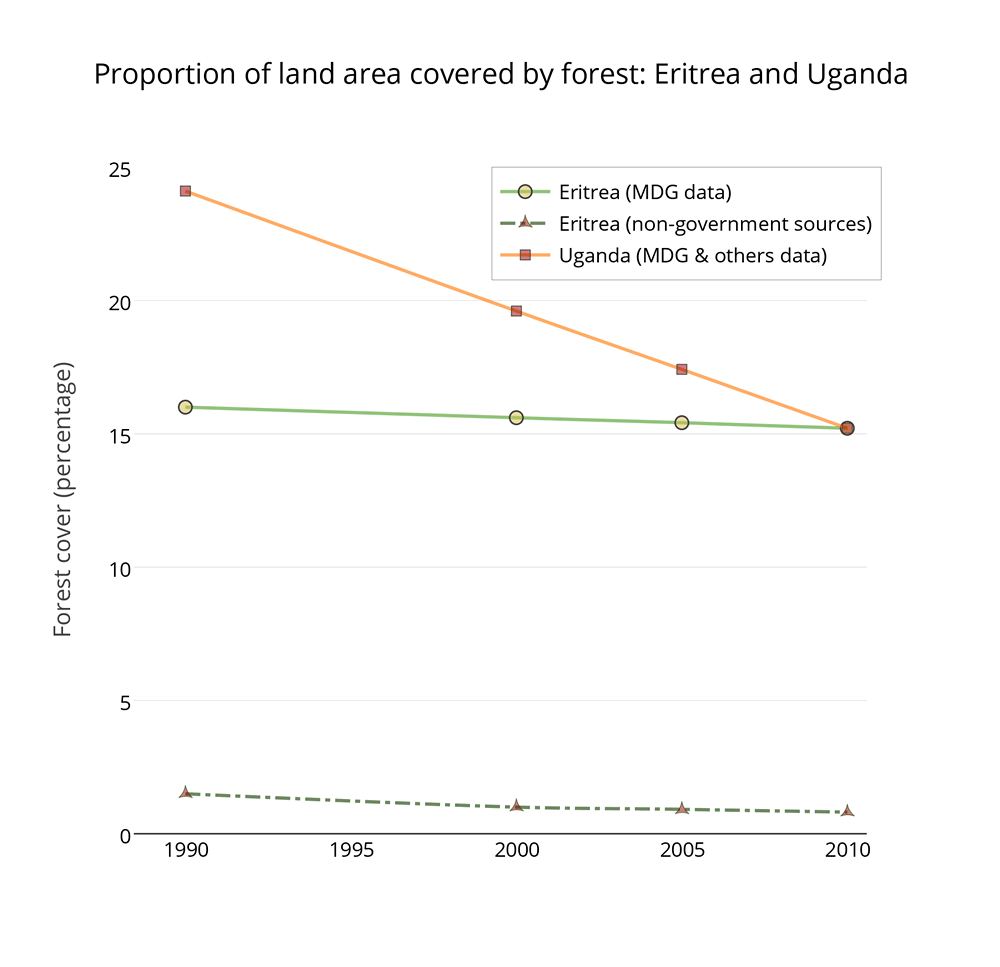What’s really ‘inside Eritrea’? a comment on the misuse of Millennium Development Goals records by the BBC World News and others
The recent European migrant crisis has added to the curiosity about the African state of Eritrea[1].
Eritreans make up a huge proportion of migrants to Europe. In 2015, one-fourth of the migrants to reach Italy by boat were Eritreans[2]. These numbers are alarming given the population size of Eritrea. Eritrean population, estimated at six million, is only a fraction of the other top migrant-producing countries to Europe.
The suffering of Eritreans is an internationally well-recognized fact[3]. Migrants from Eritrea and Syria are the only two nationalities that have over 90 per cent asylum recognition rate in EU states[4]. This means the EU recognizes nine out of ten migrant from Eritrea as legitimate refugees that need protection from their own country.
The Eritrean government, on the other hand, uses the same numbers to argue that Europe is encouraging Eritrean migration by offering protection to its economic migrants. Using a chicken-and-egg parallel, they argue that the relative ease for an Eritrean to remain in Europe drives the immigration.
“A black hole in terms of governance and humanitarian ground truth?” – Susan E. Rice, 2011
The Eritrean government has a complete monopoly of the country’s media. And since the government does not allow any journalists into the country, alternative reporting is often done by interpreting “the signs” from a distance.
Our knowledge of what goes on inside Eritrea is often based on exegetic analysis of the very little information we have. Most information is gained from personal testimonies of people that managed to leave the country.
The then US Ambassador to the UN, Ms. Susan E. Rice described Eritrea as “a black hole in terms of governance and humanitarian ground truth.”[5] at a UN Security Council briefing back in 2011. The advocacy group Reporter’s Without Borders ranks Eritrea last in its global Press Freedom Index. A record Eritrea has kept for over ten years in a row.
Eritrean government’s attempt to control information appears to be of overwhelming success. Even among Eritrean immigrants’ communities living in the West. Apparently, there is still difficulty reaching a consensus on some of the most basic questions of what life in Eritrea is like. "My uncle’s family don't visit us anymore." a second generation Eritrean immigrant told me. His father's opinion that there is no oppression inside Eritrea broke their closely-knit extended family into two. Stories like this are far too common among Eritrean immigrants. Opinions are so polarized that several Eritrean Churches (even those whose denomination are banned in Eritrea and members jailed) have had to split over opinions on Eritrean government.
The BBC goes “inside Eritrea”
Firsthand information is so scarce that when a BBC journalist was given access to film and report from inside Eritrea, the very fact was hailed as international news. The BBC aptly titled their short documentary piece “Inside Eritrea.”
Shortly after their visit to Eritrea, the BBC broadcast several productions including a 30-minute TV documentary ‘Inside Eritrea’ (aired March 13th on BBC World News program[6]), an 8-minute radio documentary for the Africa Today radio program[7] (March 11), and a couple of shorter articles on their website[8].
My comment here is focused on an element of BBC World’s coverage on their specific aspect of ‘Inside Eritrea’. However, my comments are equally relevant to (and inspired by) other more recent reporting on Eritrea by the BBC and several other reputable news agencies.
“Inside” Eritrea
The main objective of the BBC team was to report on Eritrean health care system. Once inside the country, however, the BBC journalist Yelda Hakim and her crew found themselves in the same situation as the government run state media. Their hosts had taken it upon themselves to set a detailed daily agenda for the crew. When they were interviewing locals a government minder would stand nearby, jotting down records in his notebook.
Producing an independent account of health care system (at a national scale and in just a few days) must have been a daunting task in itself. Even if the reporters were given full access to staff, facility, and past records it would still have been a challenge.
In spite of the many challenges, the BBC managed to produce a report that is substantially different from the government media. Disappointingly, however, their account was different from the state media only because it included information acquired from “outside Eritrea” (as opposed to first-hand information from “inside Eritrea” as their report title suggested).
“The UN Says” reporting
The main reference many reports on Eritrean health care use is the Millennium Development Goals Report that is published by the United Nations. UN member states agreed to commit themselves towards achieving eight international development goals (MDGs)[9] following the Millennium Summit of the UN in 2000.
Each country’s progress towards the eight MDGs is measured through 60 official indicators. Indicators include a country’s growth rate of GDP, literacy rates, Infant mortality rate, etc.
Progress towards meeting the Millennium Development Goals[10] are typically self-reported by the governments (see The Millennium Development Goals Report 2014, page 54). Specifically in the case of Eritrea, over 80 per cent of the figures found in MDG reports are from Eritrean government sources. Another 10 percent of the data was based on projections which are themselves based on other available “government and regional data”. MDG data repository conveniently indicates sources of data by color coding each individual figure.

The MDG reports, despite clearly indicating that the progress figures are self-reported by the individual countries, are often mistakenly taken as numbers produced by the United Nations. The phrase, “The UN says”, “According to the UN”, or “The UN estimates” are often amended to figures about Eritrea.
Mentioning “United Nations” when reporting figures from MDG reports about Eritrea is often misleading. The added effort of verifying where the MDG report got its data is critical.
Eritrea’s Exceptional progress Towards the Millennium Development Goals.
Typical of Eritrean government data, all the available indicators reported by the MDG show a positive progress of Eritrea. The exceptions are ‘Carbon dioxide emissions’ and ‘Consumption of Ozone-depleting substance’. In these two indicators only did Eritrea fail to make a positive progress since the early 1990’s.
Using government data that was published on the MDG report (BBC reporters, including Yelda Hakim, would refer to this as simply, “according to the UN”), I have graphed some of the interesting figures.
On HIV, Eritrea has managed to turn the tide and reduce the number of people living with HIV to below world average. This is an order of magnitude lower than the regional average (the most recent regional and global averages are indicated).

On the issue of mother and child health, the Eritrean government reports that it has managed to reduce child mortality rate to a third of what it was in the 1990’s. (the most recent regional and global averages are indicated).

On matters of environment the United Nations MDG reports put 15% of Eritrean land as covered by forest—a number that is over 15 times larger than that reported by researchers (for example, FAO, 2010[12]; Boerma, 2006[11] and Araya, 1999[13]). With this much land under forest cover, Eritrea is as green as Uganda.

Millennium Development Goals reports
The MDG Report, of course, is not a simple data repository, the report also analyzes the available data and explains trends and observations. In their recent publication, for example, the report mentions Eritrea alongside 12 other countries and points out that, “the strong reduction in under-five mortality rates in a number of low-income countries prove that low-income need not be an impediment to saving children’s lives.” It is crucial to note that such statements contained in MDG report are a result of analysis and interpretation of government data and not a result of United Nations investigation. The Millennium Development Goals project by its very nature is a commitment by member nations. As such it has no mandate to investigate countries.
For an independent assessment by the UN, one can turn to the United Nations Commission of Inquiry on Human Rights in Eritrea[3]. Its published reports are a result of UN authorized investigations; this document is worthy of “the UN says” style of reporting.
References
[1] The Economist has a section devoted to this issue: http://www.economist.com/migrationcrisis
[2] The Economist (7-10-2015). How many migrants to Europe are refugees? [Available at: http://www.economist.com/blogs/economist-explains/2015/09/economist-explains-4?fsrc=scn/tw/te/ee/st/howmanymigrantstoeuropearerefugees ]
[3] Report of the Commission of Inquiry on Human Rights in Eritrea. [Available at: http://www.ohchr.org/EN/HRBodies/HRC/CoIEritrea/Pages/ReportCoIEritrea.aspx ]
[4] For example: BBC Europe report (21-10-2015) Why is EU struggling with migrants and asylum? [available at http://www.bbc.com/news/world-europe-24583286
[5] U.S. Mission to the United Nations (2011). [Available at: http://usun.state.gov/briefing/statements/2011/170336.htm ]
[6] BBC World News (2015). [Available at: http://www.bbc.co.uk/programmes/n3csw9c5 ]
[7] BBC Africa Today (2015). [Podcast available until 10th April at: http://www.bbc.co.uk/podcasts/series/africa/all ]
[8] BBC News, Africa (2015). [Available at: http://www.bbc.com/news/world-africa-31851587 ]
[9] Millennium Project, UNDP (2006). [Available at: http://www.unmillenniumproject.org/goals/ ]
[10] Millennium Development Goals Indicators. [Available at: http://mdgs.un.org/unsd/mdg/Data.aspx ]
[11] Boerma, P. (2006). Assessing Forest Cover Change in Eritrea—A Historical Perspective. Mountain Research and Development, 26(1), 41–47. [Available at: http://doi.org/10.1659/0276-4741(2006)026[0041:AFCCIE]2.0.CO;2
[12] FAO. (2010). Global Forest Resources Assessment 2010 Country Report: Eritrea. Rome, Italy: FAO. [Available at: http://www.fao.org/docrep/013/al499E/al499e.pdf ]
[13] Araya, E. (1999). Review of the existing studies related to fuelwood and / or charcoal in Eritrea. European Commission-FAO Partnership Programme (1998-2002). Asmara, Eritrea: FAO. [Availableat: http://www.fao.org/docrep/004/x6788e/X6788E00.htm ]


![[AIM] Asmarino Independent Media](/images/logo/ailogo.png)